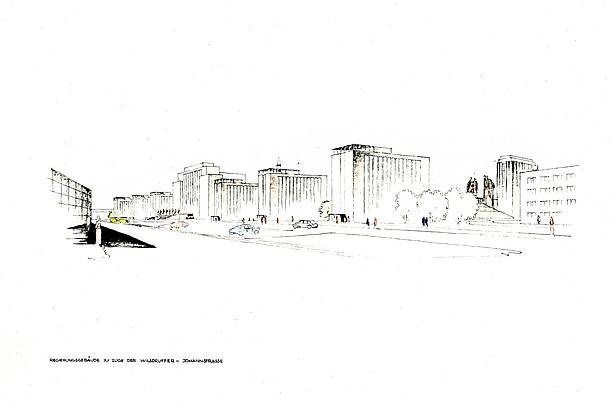Egon Hartmann 1919–2009:
Egon Hartmann was a key figure in urban reconstruction and reconstruction, first in the GDR and then in the Federal Republic. His Berlin competition successes in the early and late 1950s are a symbol of his importance in both German states: in the east for the planning of Stalinallee and in the west for a future all-German capital. Hartmann's work uniquely reflects the main lines of development in German urban planning after 1945. For him, modernist reconstruction and a return to long-established urban structures were not mutually exclusive. The exhibition shows an eventful life full of breaks and bridges on 24 roll-ups, supplemented by some drawings of Dresden.
Hartmann, who was expelled from Bohemia, studied in Weimar and quickly made a career in Thuringia: as chief architect of the state project planning office for town and village planning, he exerted a strong influence on post-war planning for many towns and cities. At the same time he worked as an architect in the Erfurt government district. In particular, he built the high-rise building for the state government (1950/51, today the administrative headquarters of the state parliament). Around 1950, Hartmann also took part in many competitions, including several in Dresden. Half a century later he was still involved in the urban development of the Saxon capital.
In 1951, Hartmann surprisingly won the overall competition for planning Berlin's Stalinallee. Although he was unable to assert himself against more established colleagues such as Paulick and Henselmann, he did design one of the construction phases. In 1954 Hartmann went west, where he held leading positions in municipal town planning in Mainz and Munich (from 1959). The reconstruction of Mainz bears his signature, and in the 1960s he designed the urban planning concept for the most extensive large housing estate in Germany, Munich-Neuperlach. In retirement, Hartmann worked as a visual artist.
